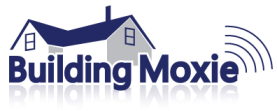Building a First Aid Kit You Can Use at Home OR on the Job Site
*******
A first aid kit is something many of us take for granted. You may have one in your home or your job site, but do you know what it contains, or how to use the contents?
The time to know these things is now, not when an accident happens, so here are some tips and advice on keeping a well-rounded first aid kit on hand, that you can actually use.
Training
You need to know how to use every item in your kit. First aid kits are designed to cover a variety of ailments and circumstances, so supplement the contents with first aid and CPR training. Share any training with your family and other people on the project; you may be the one who becomes injured.
First aid and CPR training may be provided or orchestrated by your employer. Otherwise, you can find classes in your location at www.redcross.org/take-a-class.
Contents
There is no fully-comprehensive checklist for building a first aid kit because no one location has exactly the same set of hazards. You’ll always want to be well-stocked with the basics, but there will be some additional tweaking needed to tailor your first aid kit to your particular home or office.
Your first aid kit should cover at least:
- Cuts and abrasions
- Insect bites and stings
- Mild illness symptoms such as nasal congestion, cough, and low fevers
- Over-the-counter pain relievers
- Allergic reactions
- Gastrointestinal upset
- Burns
- Splinters
- Sprains/strains
- Eye injuries
Keep first aid kits visible and accessible, while avoid storing them in damp or humid spaces, as this can compromise bandage adhesives or medications.
An accident is a bad time to find out you’re missing an essential item or that a medication is past its expiration date. Regularly inspect kits to make sure they are fully stocked and in adequate condition. Keep a list of the contents on hand to reference.
Take particular care to inspect the quality of items in your first aid kit that are related to protection from bloodborne pathogens, such as CPR mouth guards and latex gloves. Include suitable glove alternatives with the kit in case someone has latex allergies. In many places, latex items are prohibited for this reason.
Checklist
This list is not exhaustive, because hazards unique to your work area have not been considered. Use this list based on Cal/OSHA Construction Employers as a starting point to consider what your first aid kit may require.
- Item instructions
- Disposable latex or synthetic gloves
- Roller gauze and gauze pads
- Cold packs
- Adhesive dressing
- Adhesive tape
- Eye dressing packet
- Antibiotic ointment
- Saline solution
- Hand sanitizer
- Triangular bandages
- Thermometer
- Cotton balls and swabs
- Tweezers
- Scissors
- Safety pins
- Flashlight
- Bulb suction device
- Duct tape
- Petroleum jelly
- Assorted bandages in both roll (i.e. Ace) and strip (i.e. Band-Aids) form
- Aloe vera gel
- Calamine lotion
- Hydrocortisone cream
- An item to administer liquid medications, such as a syringe or spoon
- Antihistamines
- Over-the-counter pain relievers (include aspirin and a non-aspirin alternative)
- Decongestants
- Insect sting kit
- Common cold medications, preferably in tablet or capsule form. Do not include items that need to be refrigerated.
- A list of emergency contact numbers
Always follow safe practices with your health (and the health of those around you) in mind. In the event of an unfortunate accident, be prepared with a properly-stocked first aid kit.
*******
— Jay Acker leads a team of writers and blog regularly for www.safetyservices.com. The company provides a variety of safety training training aids and supplies including first aid kits for small, medium and large companies. For more on working smart & safely, see our category – Safety. Cheers. ~jb
Photo Source: http://www.morguefile.com/archive/display/536834.







there are only 2 things you absolutely need: gauze tape and waterproof adhesive tape.